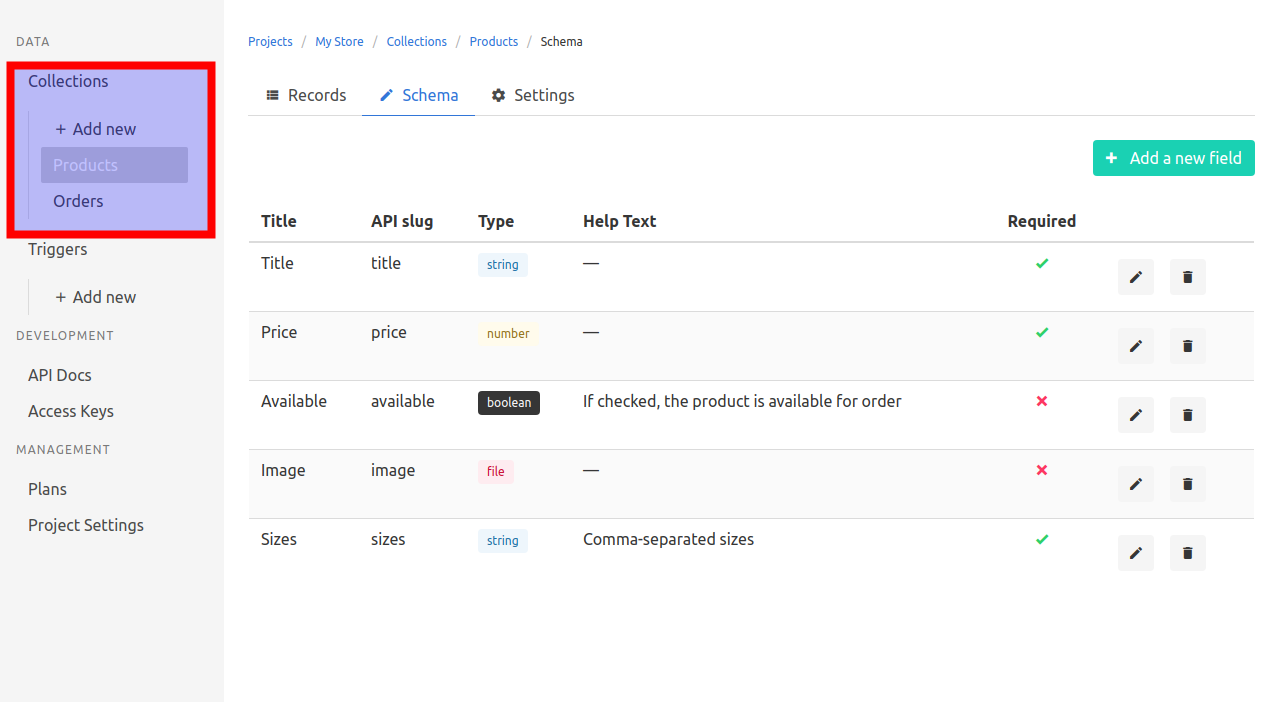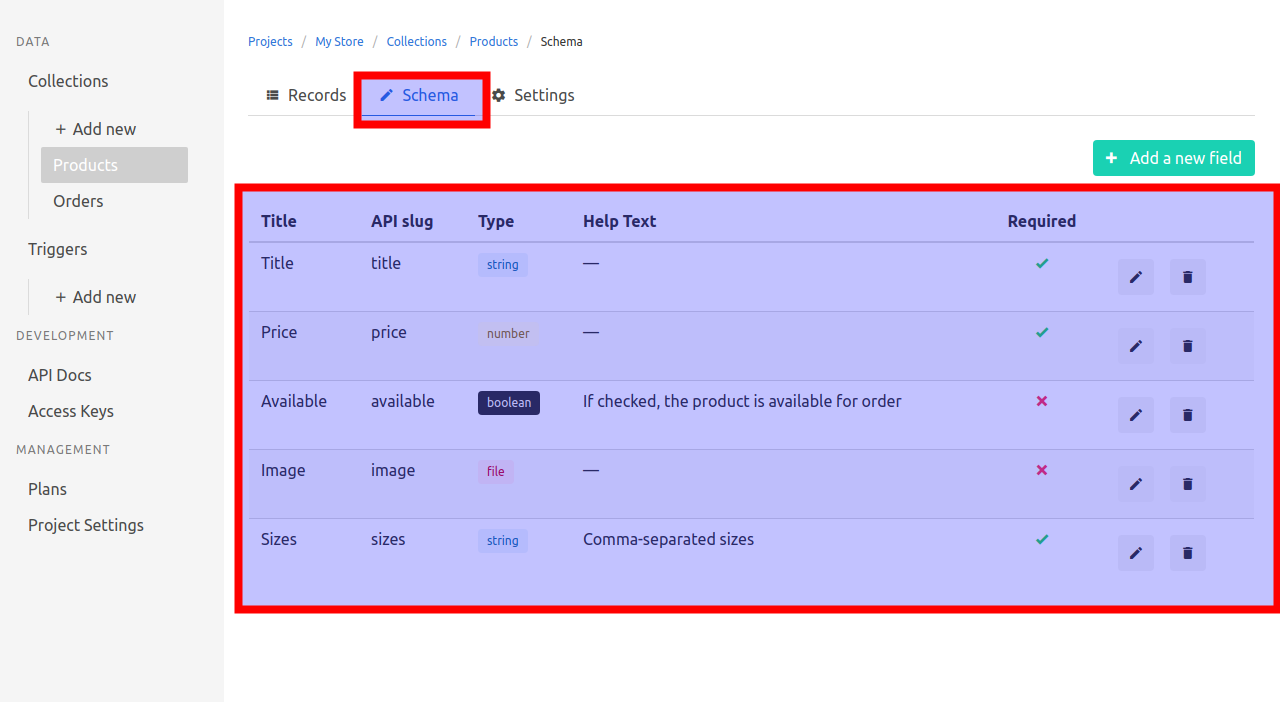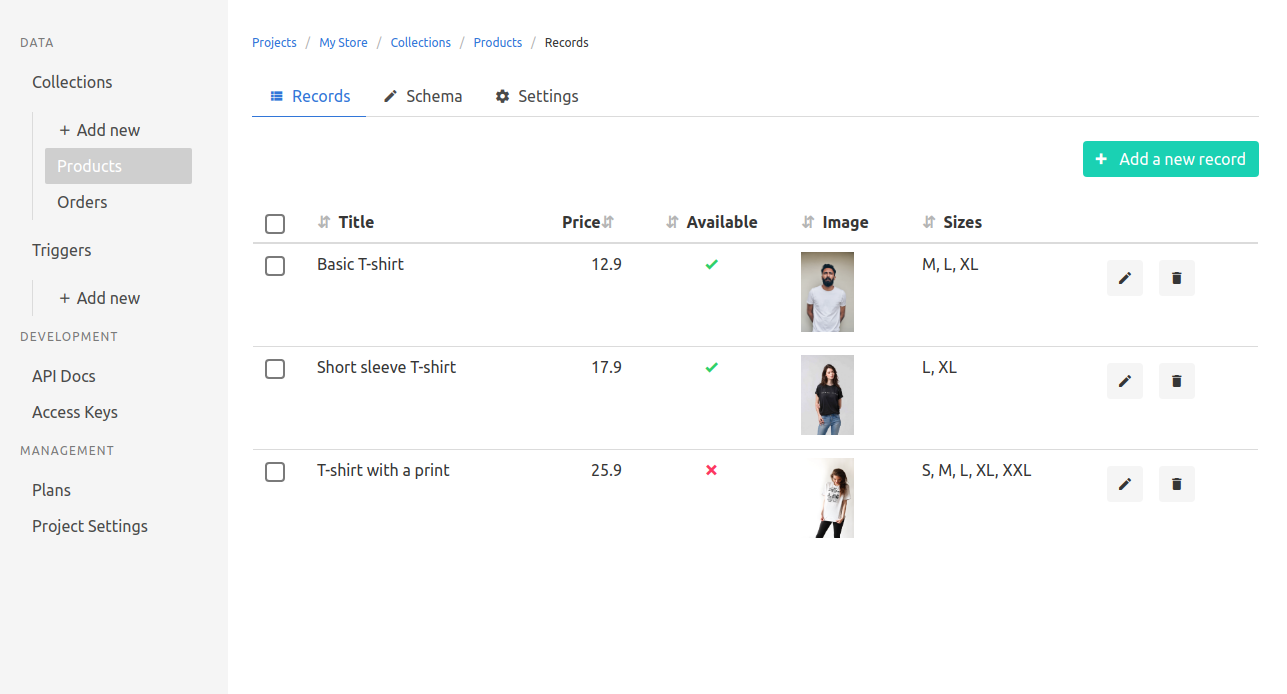Getting Started with Apisful¶
Whether you are creating a personal website or a mobile application that is going to become a unicorn, it's pretty easy to start with Apisful. Let's go through a few essential steps.
Step 1: Create an Account¶
If you haven't yet signed up, create a free account. Apisful offers a forever free plan with generous limits. If you are just getting started with your project, our free plan has got you covered.
Step 2: Create a Project¶
You can have unlimited projects in the account. Creating a new one, you need only fill the project title and choose the project template.

If you choose a template it will automatically create minimum essentials collections (read more about collections) and fill the project with demo records (read more). You can easily change the project data schema and content later.
We strongly recommend to use a template - is saves a lot of time and helps to understand how to use Apisful if you are a new user.
Here are some templates that you can use:
- E-Commerce - designed for projects that sell anything online. It creates a collection with products and orders, and fill the collections with demo data
- Agency - it's useful if you are going to create a website of your digital agency with a list of services, portfolio, etc
Step 3: Manage Data¶
Whether you are created a project from a template, or blank, you are free to manage all your data using editor-friendly web interface.
Collections¶
The way you define the kind of content you can edit inside each different administrative area passes through the concept of collections, which are much like database tables.
Each administrative area can specify a number of different collections, and they represent blueprints or API endpoints upon which users will store the website content.
For example, a website project can define different collections for articles, products, categories, and so on.

Fields or Schema¶
The most important part of a collection – and the only required part of a collection – is the list of database fields it defines. Each field has a name and additional metadata or particular configurations to better present the field to the editor.
For example, a products collection may have fields like title, price, an image of a product, and so on.

Records¶
Apisful stores the individual pieces of content you create in a collection as records, which are much like table rows in a database.
With the web interface you can easily create, change, view, sort, and filter records.

Step 4: Use Your Data¶
Discover Apisful Content REST API that allows you to use data from anywhere.